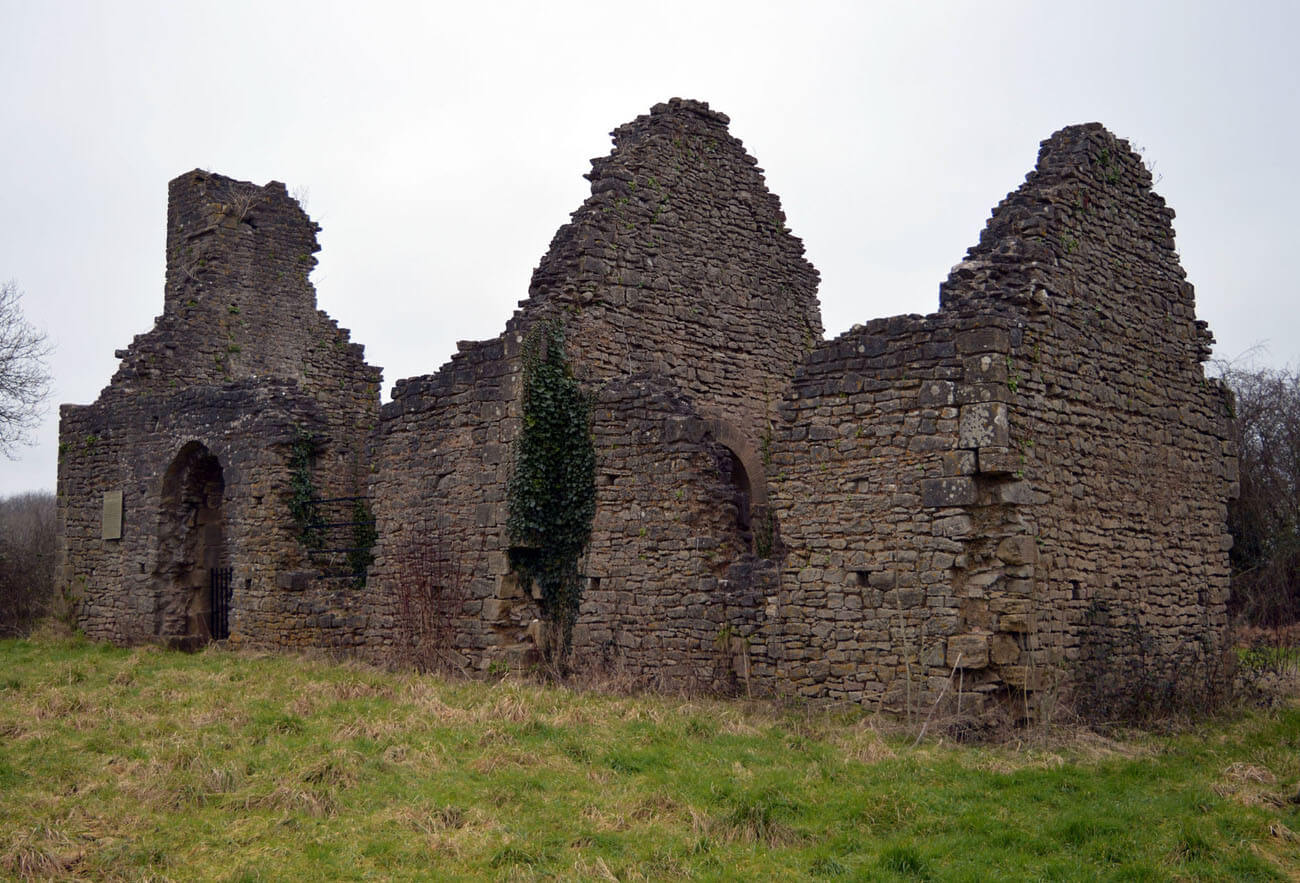History
The church was built in the 12th century in the village, which first appeared in written sources in 1245 under the name Runston and in 1262 under the name Ryngeston. This name indicates that it had to be founded by a certain Rhuna or Runa whose descendants (or himself) founded a local church. It is not known when the settlement depopulated and why. This could be due to climate change or an epidemic. In the mid-16th century, only nine houses (of about 25 previously functioning) were inhabited in Runston. However, the church was used for funeral ceremonies until the 18th century. The last person was buried at the local cemetery in 1770, and in 1798 the entire village was described as completely abandoned.
Architecture
The church was located in the medieval village of Runston on a small hill. It consisted of a rectangular nave and a narrower square chancel. In the next, but probably still medieval phase, a four-sided tower was added on the west side. Later, it was demolished, and a much smaller, partly embedded belfry was erected in its place.
The chancel was originally illuminated by a pair of narrow, splayed windows in semi-circular niches, pierced in the north and south walls, and through a third window on the east facade axis. A small niche was placed in the southern wall, probably a piscina, and on the west side of the nave a narrow arcade with chamfered imposts and a semi-circular head of carefully worked stone blocks.
The nave, like the chancel, was illuminated by two narrow windows in semi-circular, splayed to the interior niches and pierced with portals on the north and south sides. Although the windows were wide splayed, the interior must have been in semi-darkness, especially since even later larger Gothic windows were not introduced. Both entrances may have been equipped with Romanesque tympanums.
Current state
Although the church is currently in a state of a ruin, it is a valuable example of a Romanesque sacral building. All its perimeter walls have survived with larger defects only in the places of the former window and entrance openings. The best preserved architectural detail is the semicircular Romanesque arcade of the chancel with imposts.
bibliography:
Davis P.R., Lloyd-Fern S., Lost churches of Wales & the Marches, Wolfeboro Falls 1991.
Salter M., The old parish churches of Gwent, Glamorgan & Gower, Malvern 2002.
Turner R., Chepstow Castle, Cardiff 2007.




